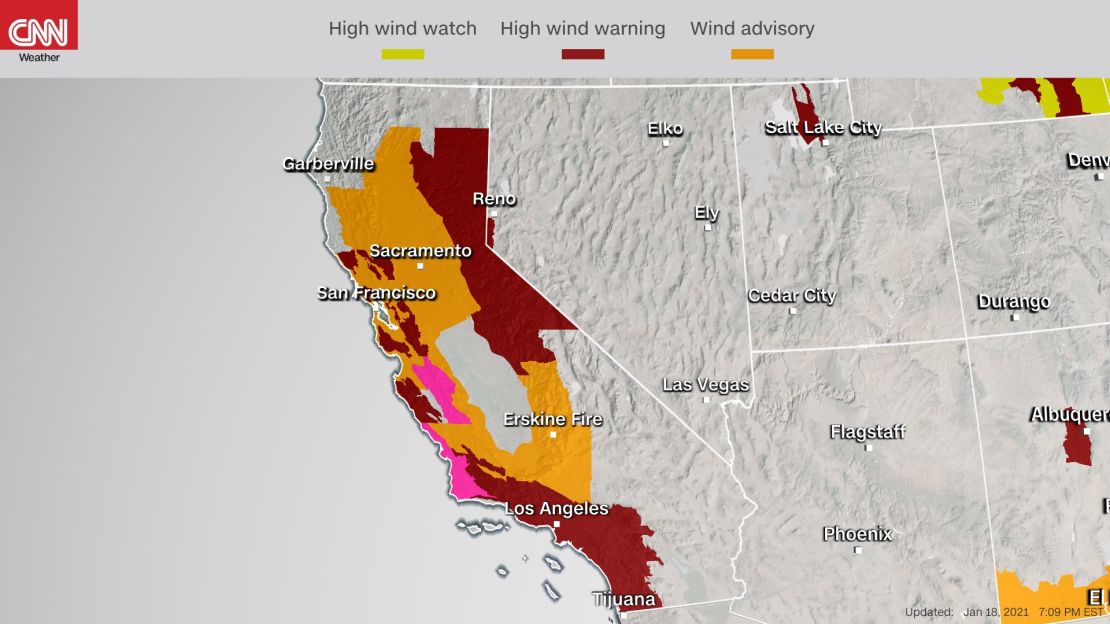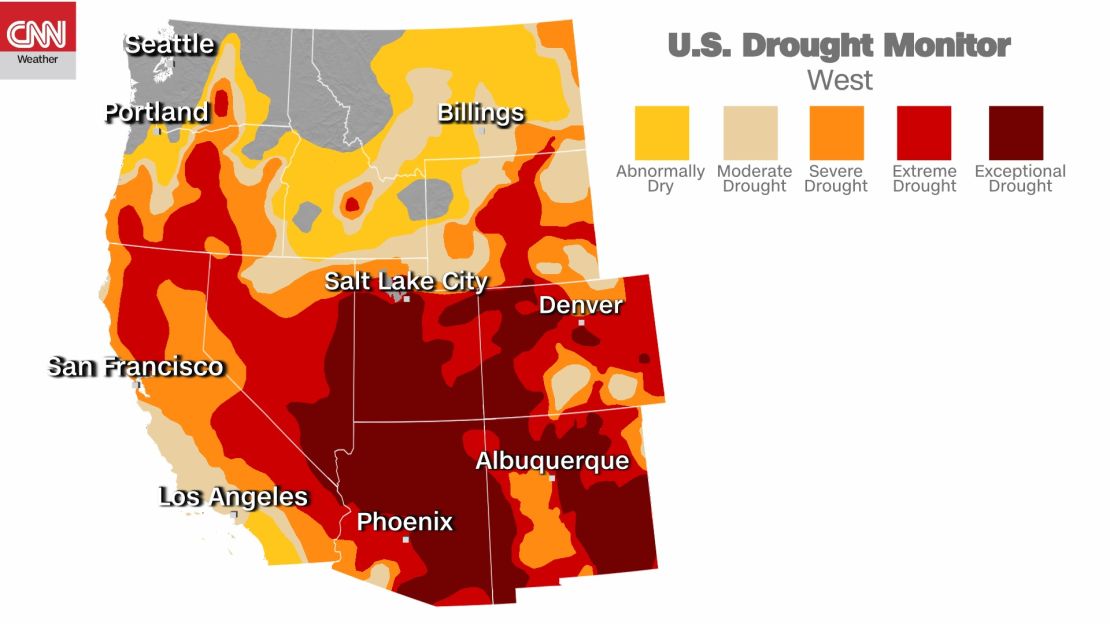California could be facing the strongest wind event of the season this week, forecasters say.
Strong, damaging winds began across portions of Northern and central California Sunday night and are expected to last through Wednesday.
High-wind alerts were in effect late Monday afternoon for more than 30 million people from north-central California down to Southern California.

The setup
A strong area of high pressure will build across the Northwest on Monday and this area of high pressure will shift into the Great Basin by Tuesday. While this area builds, an area of low pressure will develop off the southern coast of California.
The proximity and strength of the two systems is important. This is known as the pressure gradient, which is forecast to be quite strong and will cause these intense winds to develop early this week.
Winds flow from areas of high pressure to areas of low pressure, so in this instance the winds for this event are expected to be offshore winds, when the wind moves from land out to sea. Locally across different areas of California these wind events are often referred to as “Diablo winds,” “Mono winds,” or “Santa Ana winds.”

Timing
Areas of north-central California are already experiencing these strong winds, which will last through Tuesday.
“Gusts in populated areas may reach into the 30 mph range while in the hills and mountains, gusts into 40s and possible 50 mph range. Prepare now,” the National Weather Service office in San Francisco said on Saturday evening.
The strongest winds across Northern and Central California are expected to develop into Tuesday morning.
“We are gaining more confidence that widespread sustained NE winds of 35 to 55 mph will be possible with gusts of 70 to 80 mph, strongest below and through passes and canyons,” the NWS office in Los Angeles said Saturday afternoon.
The strongest winds across Southern California are expected on Tuesday.
Winds this strong could lead to downed trees and power lines, power outages and potentially widespread critical fire weather conditions across much of the state.
Fire weather
Typical fire weather conditions across areas of Southern California are fueled by a combination of above average temperatures, low humidity values, dry vegetation, and strong winds. The developing low pressure off the Southern California coast could limit some of these factors, bringing with it cooler temperatures and higher humidity values.
Due to this, fire weather conditions could be somewhat limited early this week.
However, many locations across Southern California, including Los Angeles, have not seen measurable rain since the end of December, meaning the vegetation across the region has had over two weeks to dry out.
Southern California has also experienced record heat over the last several days, in addition to the growing drought across the region.
When you factor in dry vegetation, drought conditions, and strong winds all it takes is one spark for a fire to begin and spread rapidly. The Storm Prediction Center has not ruled out the chance for critical fire weather conditions, especially on Monday.
“Confidence in the wind forecast remains fairly high, but colder air advecting into the region will begin a cooling trend that will improve RH (relative humidity) values during the forecast period,” the Storm Prediction Center said on Sunday morning.

The SPC also said these humidity values could fall into the teens in some locations due to downsloping winds – dry winds that flow from east to west through the mountain passes in California – which could lead to a few hours of critical fire weather conditions on Monday afternoon.
This area of low pressure will however bring some much needed rain and snow to portions of the Southwest over the next few days, which will help toward lowering the widespread drought conditions across the region.
